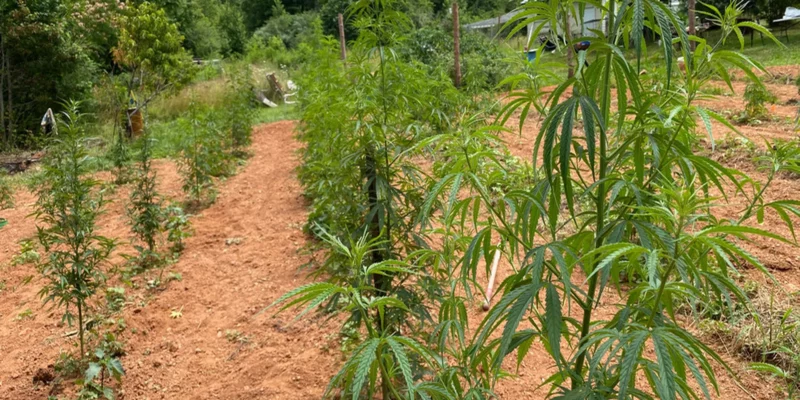The cultivation of Weed Plant Outside is a time-honored tradition that connects growers with the natural world and allows the plant to thrive in its optimal environment. In this in-depth guide, we explore the art of cultivating weed plants outside, delving into the benefits, techniques, and considerations involved in successful outdoor cultivation. From selecting the right strain to understanding soil composition and maximizing sunlight exposure, this article aims to provide valuable insights and practical tips for nurturing robust and potent cannabis plants in the great outdoors.
Embracing the Benefits of Weed Plant Outside
Harnessing Natural Sunlight: Growing weed plants outdoors allows cultivators to take advantage of the full spectrum of natural sunlight. This results in healthier plants with improved cannabinoid profiles and complex terpene profiles, enhancing the overall quality of the harvest.
Cost-Effective Approach: Outdoor cultivation eliminates the need for expensive artificial lighting and energy consumption, making it a more cost-effective option for growers.
Enhanced Terroir: Similar to wine grapes, cannabis plants grown outdoors develop unique flavors and aromas influenced by the local climate, soil, and environmental conditions. This imparts a distinct character to the final product, adding to its allure for connoisseurs.
Greater Yield Potential: Outdoor cultivation allows cannabis plants to reach their full potential in terms of size and yield. With ample space and unrestricted growth, plants can produce larger harvests compared to indoor cultivation.
Selecting the Right Strains
Climate Considerations: Start by considering the climate of your region. Certain strains thrive in specific climates, such as indices that perform well in cooler regions and sativas that prefer warmer climates. Research and select strains that are best suited to your local conditions.
Photoperiodic vs. Autoflowering Strains: Photoperiodic strains rely on changes in light to trigger flowering, making them more suitable for regions with distinct seasons. Autoflowering strains, on the other hand, flower based on age, allowing for multiple harvests throughout the year.
Disease and Pest Resistance: Look for strains known for their resistance to common diseases and pests in your area. This helps ensure a healthier and more resilient crop, reducing the risk of potential damage and loss.
Personal Preferences: Consider the desired effects, flavors, and aromas you seek in your cannabis. Different strains offer varying cannabinoid profiles, terpene compositions, and overall experiences. Tailor your selection to meet your personal preferences and goals.
Preparing the Outdoor Growing Space
Site Selection: Choose a location with ample sunlight exposure, preferably a south-facing area that receives at least six to eight hours of direct sunlight per day. Ensure the site is well-drained to prevent waterlogging and potential root rot.
Soil Preparation: Prepare the soil by testing its pH level and amending it with organic matter, such as compost or aged manure, to improve its texture and nutrient content. This creates a fertile foundation for healthy plant growth.
Outdoor Containers or Planting in the Ground: Decide whether to plant directly in the ground or utilize outdoor containers. Planting in the ground allows plants to establish stronger root systems, while containers provide more flexibility in terms of mobility and pest control.
Consider Companion Planting: Explore the concept of companion planting by selecting companion plants that deter pests or attract beneficial insects, creating a harmonious ecosystem that supports the health of your cannabis plants.
Care and Maintenance
Watering and Feeding: Provide consistent watering, allowing the soil to dry out slightly between waterings to prevent overwatering. Supplement with organic fertilizers tailored to the specific growth stages of your plants.
Pruning and Training: For Weed Plant Outside Regularly inspect your plants for any signs of nutrient deficiencies, pest infestations, or excessive growth. Prune selectively to promote airflow and remove any dead or damaged foliage. Consider techniques like low-stress training (LST) or topping to control plant height and encourage lateral branching.
Pest and Disease Management: Monitor your plants closely for common pests like aphids, spider mites, or caterpillars. Implement organic pest control methods, such as companion planting, neem oil, or beneficial insects, to keep pests at bay. Maintain good garden hygiene to minimize the risk of diseases.
Harvesting: Monitor the trichomes closely using a magnifying tool to determine the optimal harvest time. Harvest when the trichomes appear milky or amber, depending on the desired potency. Use sharp pruning shears to carefully trim the plants, and dry and cure the buds in a controlled environment.
Conclusion
Cultivating Weed Plant Outside is a rewarding experience that allows growers to connect with nature and harness the full potential of cannabis. By selecting the right strains, preparing the outdoor growing space, and providing proper care and maintenance, cultivators can achieve robust and potent plants that showcase the unique terroir of their region. Embracing the benefits of outdoor cultivation, such as natural sunlight and cost-effectiveness, adds to the allure of growing weed plants outside. So, embrace the beauty of outdoor cultivation and nurture your own thriving cannabis garden.


